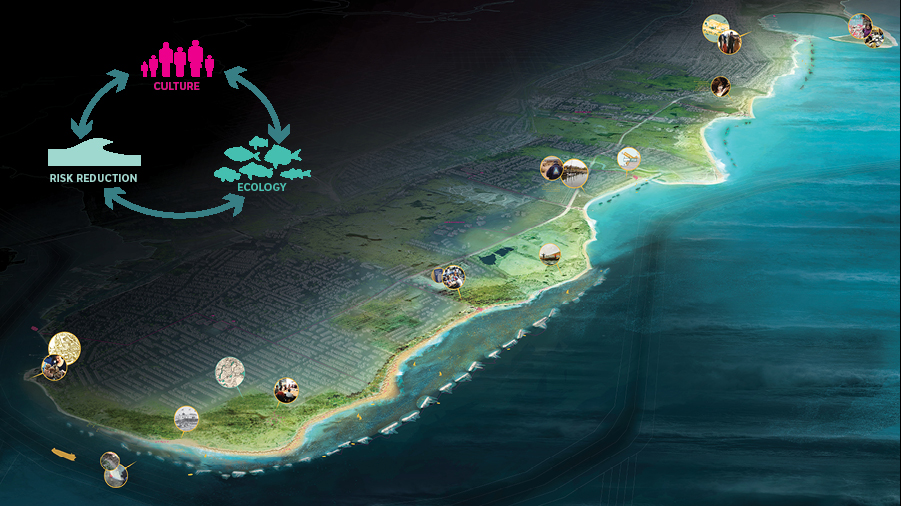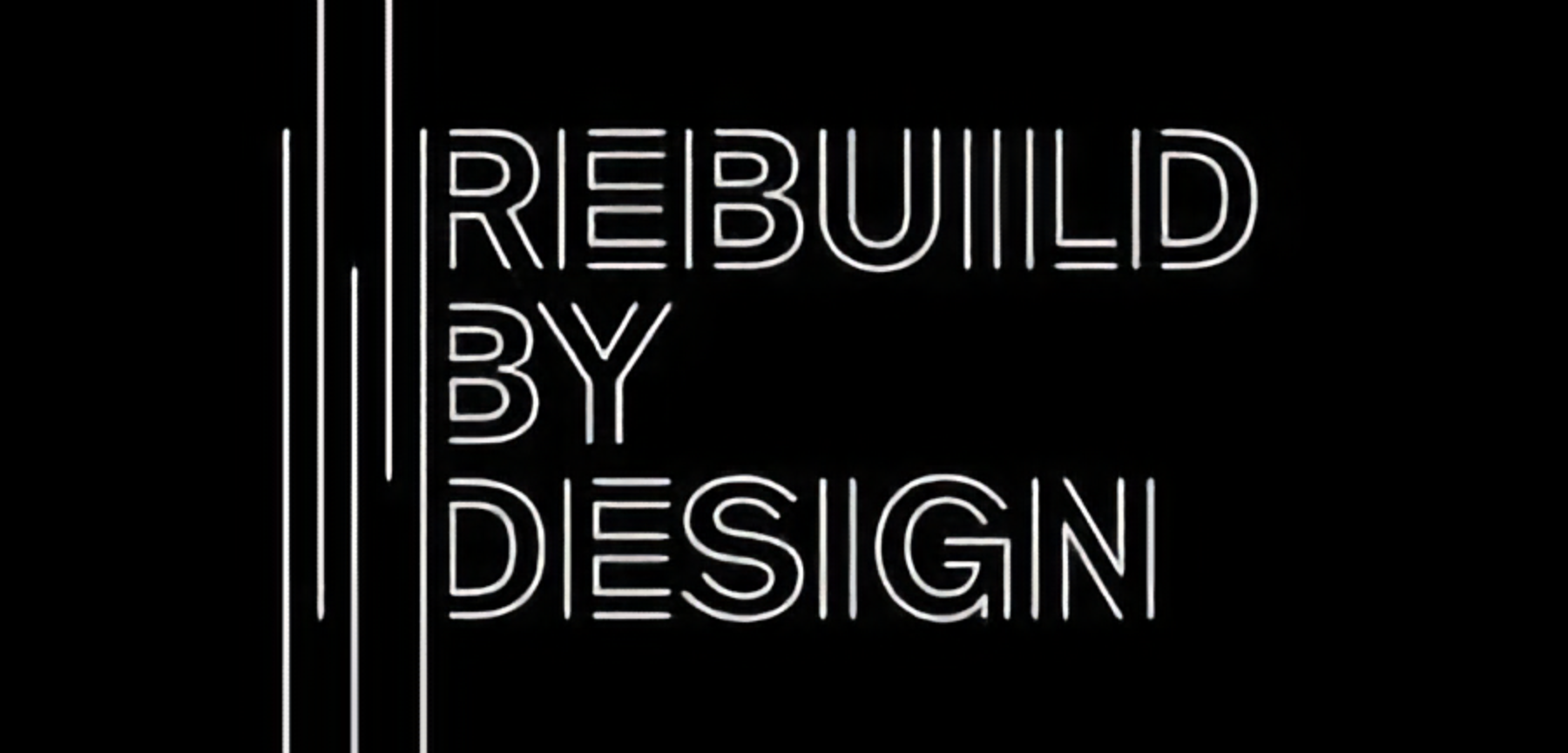
PROJECT PAGES: Living Breakwaters
BACKGROUND
Developed by: SCAPE/LANDSCAPE ARCHITECTURE with Parsons Brinckerhoff, Dr. Philip Orton / Stevens Institute of Technology, Ocean & Coastal Consultants, SeArc Ecological Consulting, LOT-EK, MTWTF, the Harbor School and Paul Greenberg
Situated at the mouth of the New York Bight, the south shore of Staten Island is vulnerable to wave action and erosion, particularly on its south shore in Tottenville. Dredging and the diminishment of natural and farmed oyster reefs have left it increasingly exposed over time. One of the hardest hit areas during Hurricane Sandy, Tottenville experienced severe erosion from the storm, and, given the predicted impacts of sea level rise, it will continue to lose acreage in the future if no action is taken to protect the area.
Location: Tottenville, Staten Island, NYC
Award: $60 Million
Implemented By: New York State Governor’s Office of Storm Recovery
PROPOSAL
The Living Breakwaters competition concept was conceived to connect physical, social, and ecological resilience. The proposal envisions a “necklace” of offshore breakwaters that will reduce risk, revive ecologies, and connect residents and educators to Staten Island’s southeast shoreline. The structure will provide habitat to the Raritan Bay’s rich ecosystem of marine life, and an on-land Water Hub will be constructed with space for visiting groups, recreational activities, and educational programs. The team’s work with the Harbor School and the Billion Oyster Project will bring educational opportunities for local school groups, teaching the next generation of ecological stewards about protecting Staten Island’s fragile coastline.
Living Breakwaters is designed to work in concert with other ongoing resilience initiatives in the area, including the New York Rising Community Reconstruction Tottenville Dune and Coastal Dune Plantings project. The vegetated dune system will be strengthened by the breakwaters, to provide a layered system of protection.
View the team’s full original proposal here.
IMPLEMENTATION PROGRESS
The SCAPE team conducted extensive hydrodynamic modeling and engineering analysis of the breakwaters to develop design scenarios. These iterations were shared with the local Citizens Advisory Committee (CAC) for review and community input. The final project design has been adjusted from the original competition proposal and received city, state, and federal agency approval.
The project broke ground in September 2021 and will include 2,400 feet of breakwaters, which are partially submerged structures composed of marine stone and biologically enhanced concrete designed with “reef ridges” and tidal pool units to provide habitats for oysters and other marine life. The eight breakwater structures, placed 1,000 feet offshore, are designed to break wave intensity, reverse beach erosion, and restore and enhance marine habitats. The project also promotes social resilience through local educational programs led by the Billion Oyster Project (BOP) and the open-access Living Breakwaters Curriculum developed by BOP and design team lead SCAPE Landscape Architecture.
Already, the construction team has finished production of all ecologically-enhanced concrete and tidepool units that will be placed in precise locations to enhance ecological habitat. The first two breakwaters will be completed in 2022. Placement of the third breakwater will begin later this year. Construction of all breakwaters is slated for completion by fall 2024, and planned Tottenville shoreline restoration will follow.
Check out the project website here to see the final project design, or learn more about the project here on the SCAPE project page. Click here for construction updates.
Budget: $107 million ($60M CDBG-DR grant through Rebuild by Design, $4M State funding)
Press:
- Can oysters save New York City from the next big storm?, The Guardian (March 2022)
- How One Billion Oysters Could Protect NYC from the Next Superstorm, NBC (December 2021)
- New York City is Building a Wall of Oysters to Fend Off Floods, Bloomberg (November 2021)
- “Manufactured Nature” by Eric Klinenberg, The New Yorker (August 2021)
- Kate Orff discusses Living Breakwaters with Christiane Amanpour on CNN / PBS (August 2021)
